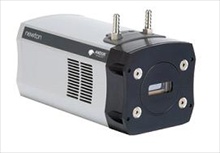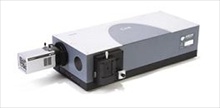Members Login

Channels
Special Offers & Promotions
St Andrew
 If you can't tell your Bruichladdich from your
Irn-Bru, or your Glenfiddich from your Glenmorangie, help is at hand from the
physics department at St Andrews University. Praveen Ashok, Kishan Dholakia and
Bavishna Praveen of the optical manipulation group have developed a
microfluidic device that can not only detect counterfeit whisky samples but
also characterise genuine samples by brand, age and, even, cask.
If you can't tell your Bruichladdich from your
Irn-Bru, or your Glenfiddich from your Glenmorangie, help is at hand from the
physics department at St Andrews University. Praveen Ashok, Kishan Dholakia and
Bavishna Praveen of the optical manipulation group have developed a
microfluidic device that can not only detect counterfeit whisky samples but
also characterise genuine samples by brand, age and, even, cask. Quality standardisation for Scotch whisky is assessed using alcohol content,
colour consistency and flavour. Low alcohol content is a primary indicator of
fake whisky but the distinctive flavour, which is determined by its congener
profile, is very difficult to mimic. This profile is governed by organic
compounds formed during fermentation and during maturation in wooden casks.
Amounting to less than 1% of the total volume, these include organic acids,
higher order alcohols, esters, and aldehydes and wood extracts, such as tannin,
acid and colouring matters.
Quality standardisation for Scotch whisky is assessed using alcohol content,
colour consistency and flavour. Low alcohol content is a primary indicator of
fake whisky but the distinctive flavour, which is determined by its congener
profile, is very difficult to mimic. This profile is governed by organic
compounds formed during fermentation and during maturation in wooden casks.
Amounting to less than 1% of the total volume, these include organic acids,
higher order alcohols, esters, and aldehydes and wood extracts, such as tannin,
acid and colouring matters.The team used an alignment-free, optical fibre based, optofluidic chip to analyse 20 µL samples of commercially available single malt whiskies using Near Infrared (NIR) spectroscopy. No sample preparation was involved, variation due to ethanol evaporation was eliminated by the confinement within the microfluidic channel and the analysis time of was approximately two seconds. Raman and fluorescence spectra were recorded by an Andor Shamrock SR-303i spectrometer equipped with an Andor Newton DU920P BR-DD back-illuminated, thermoelectrically-cooled CCD camera.
"The Raman spectra of the whisky samples is dominated by peaks corresponding to 40% ethanol and our results clearly demonstrate that the alcohol content may be predicted to a probability of more than 99%, enough to rapidly weed out the majority of fakes" says Praveen Ashok. "Although the congener components could not be distinguished from differences in the Raman peaks, the broad fluorescence background is markedly different for different types of whisky due to the variation in congener profiles. The result is successful classification of whiskies based upon their age, origin and cask - a skill few human palettes can match.
"We chose the Andor analytical instruments due to the high sensitivity of the DU920P BR-DD CCD camera and the small form factor of the Shamrock SR-303i spectrometer. While its performance is every bit as good as a bench-top system, the Shamrock's compact size and low weight lent it a degree of portability as well. This was important to us as we wanted to demonstrate the potential of a hand-held device that could be used by distilleries to quality control their production by benchmarking against a known standard. The same hand-held instrument could also be used to test for counterfeit whisky bottles and confidently deliver reliable results in seconds," concludes Ashok.
"The maintenance-free, deep Thermo-Electric cooling and USB connectivity of the Newton Deep-Depletion platform enables access to the highest NIR sensitive detection, not only in Research labs but also in challenging industrial environments," according to Antoine Varagnat, Product specialist at Andor. "When combining the Shamrock 303 USB spectrograph with their novel Raman-based micro-fluidics system, Ashok's team were able to successfully demonstrate a very sensitive and accurate setup for the rapid characterization and sorting of liquids, This also enabled them to identify counterfeit lots of potentially valuable spirits in an industrial environment. This powerful Raman micro-fluidics technique will be of great interest for the liquid-processing industry in general, but this is also great news for Whisky aficionados around the world."
Andor's modular Spectroscopy solutions encompass a wide range of high performance CCD, ICCD, EMCCD and InGaAs array detectors, as well as a comprehensive range of Research-grade spectrograph platforms. To learn more about the Newton camera series and their use in spectroscopy, please visit the Andor website spectroscopy pages
Reference
Praveen C. Ashok, Bavishna B. Praveen, and K. Dholakia "Near infrared spectroscopic analysis of single malt Scotch whisky on an optofluidic chip," Optics Express Vol. 19, No. 23. November 7, 2011
Media Partners


